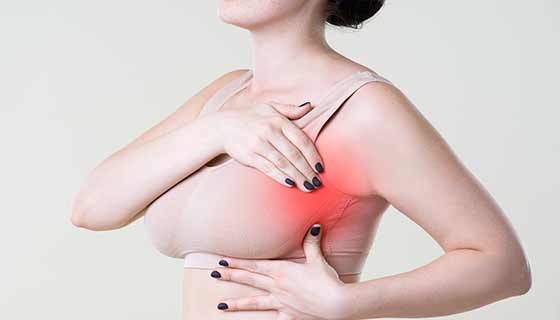Causes of Breast Lumps
There are many possible causes for a lump in your breast, including:
- breast cysts, which are soft, fluid-filled sacs
- milk cysts, referring to sacs filled with milk that can occur during breast-feeding
- fibrocystic breasts, a condition in which breast tissue feels lumpy in texture and is sometimes accompanied by pain
- fibroadenoma, meaning noncancerous rubbery lumps that move easily within the breast tissue and rarely become cancerous
- hamartoma, which is a benign, tumorlike growth
- intraductal papilloma, referring to a small, non-cancerous tumor in a milk duct
- lipoma, which is a slow-growing, noncancerous, fatty lump
- mastitis, or an infection of the breast
- injury
- breast cancer
Signs You Should See a Doctor
Remember, most breast lumps are noncancerous. However, you should make an appointment to see your doctor if:
- you discover a new lump
- an area of your breast is noticeably different than the rest
- a lump does not go away after menstruation
- a lump changes or grows larger
- your breast is bruised for no apparent reason
- the skin of your breast is red or begins to pucker like an orange peel
- you have an inverted nipple (if it was not always inverted)
- you notice bloody discharge from the nipple
What to Expect at Your Doctor Visit
When you visit your doctor to report a breast lump, they will probably ask you questions about when you discovered the lump, and if you have any other symptoms. They will also perform a physical exam of the breasts.
If your doctor cannot identify the cause of the lump, additional testing may be ordered.
Mammogram
A mammogram is an X-ray of the breast that helps identify breast abnormalities. A diagnostic mammogram can be compared to previous screening mammograms, if available, to see how the breast tissue has changed.
Ultrasound
An ultrasound is a noninvasive, painless procedure that uses sound waves to produce images of your breast.
Magnetic Resonance Imaging (MRI)
This test uses a magnetic field and radio waves to take detailed pictures of your breast.
Fine-Needle Aspiration
Fluid from a breast lump can be removed with a needle. In some cases, an ultrasound is used to guide the needle. Noncancerous cysts go away when the fluid is removed. If the fluid is bloody or cloudy, the sample will be analyzed by a laboratory for cancer cells.
Biopsy
This is a procedure to remove a sample of tissue for analysis under a microscope. There are several types of breast biopsy:
- fine-needle aspiration biopsy—a tissue sample is taken during a fine-needle aspiration
- core needle biopsy—uses an ultrasound for guidance; a larger needle is used to get a tissue sample
- vacuum-assisted biopsy—a probe with a vacuum is inserted into a small incision in the skin and a tissue sample is removed using an ultrasound for guidance
- stereotactic biopsy—a mammogram takes images from different angles and a tissue sample is taken with a needle
- surgical biopsy (excisional biopsy)—the whole breast lump, along with surrounding tissue, is removed
- surgical biopsy (incisional biopsy)—only part of the lump is removed
Treatment for Breast Lumps
Your doctor must determine the cause of your breast lump before he or she can formulate a treatment plan. Not all breast lumps will need treatment.
If you have a breast infection, your doctor will probably prescribe antibiotics to treat it. If you have a cyst, it can be drained of fluids. Usually, cysts go away after they’re drained. In some cases, cysts do not need to be treated and may disappear on their own.
If the lump is found to be breast cancer, treatment can include:
- lumpectomy, or removing the lump
- mastectomy, which refers to removing your breast
tissue
- chemotherapy, which uses drugs to fight or
destroy the cancer
- radiation, a treatment that uses radioactive
rays or materials to fight the cancer
Your treatment will depend on the type of breast cancer you have, the size and location of the tumor, and whether the cancer has spread beyond your breast.
There are other causes of breast lumps which do not require any treatment. If you have a breast lump due to an injury, your doctor may recommend allowing your breast time to heal. Some types of breast lump, such as fibroadenoma, in many cases do not need to be removed or treated at all. That’s why it’s important not to jump to conclusions if you find a breast lump. Your doctor can help determine if the lump requires further testing and if any treatment is needed.

